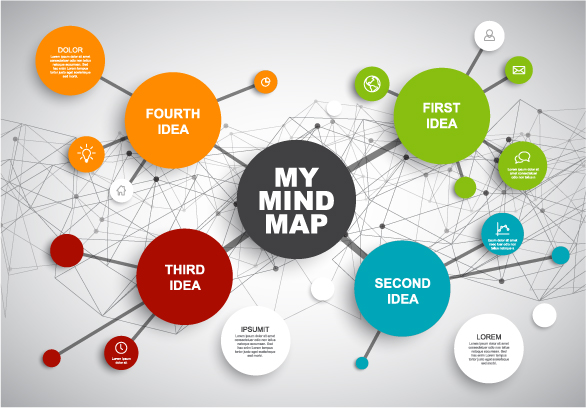# Empathise
# Mindmapping
- Purpose
- Understanding the mental map of the user
- Time required
- 10 to 60 minutes
- Participants
- Design Thinking team
- Level of experience
- Beginner

# What is it about?
Mindmaps are representations that help to visually map and analyze connections and correlations between a number of ideas. Understanding connections is a prerequisite for the development of designs.
# The goal
Mindmaps can be used to explore the relationships between ideas. They also help to identify and organize ideas and approaches. They also serve as a summary and visualization of information.
# How to do it?
- Start with the central term or thought. Write it in the middle of a sheet of paper and frame it.
- Write down the first words that come to mind. Add pictures or symbols if necessary.
- Identify significant keywords, images and symbols. These are the main nodes.
- The other terms and elements are the other nodes. Connect them when there is a connection or relationship between them.
- When necessary, vary the connections by thicker or dashed lines and/or colours.
# When do you need it?
Mindmaps are the first step for the development of designs and solutions. They can be useful at any stage of the project. They are recommended when a context or user needs need to be explored or plans for further action need to be made.
# Resources
- Paper or whiteboard
- Pen
# Advantages
The greatest advantage is the organization and structuring of the information, which shows the connections between the individual ideas.
# Disadvantages
Mind maps are too limited for some use cases because cross-connections are difficult to map. In addition, the tree-like overview can be lost if there are numerous branches.
# Keep in mind
Visualize the words in the mind map clearly and structure the content meaningfully. Use colors and images for visual impressions.
# See also
| Previous methods | Alternative methods | Following methods |
# Sources
- Curedale: Design Thinking: process and methods manual (opens new window) Design Community College Inc. ISBN: 9780988236240.
← Interviews Shadowing →